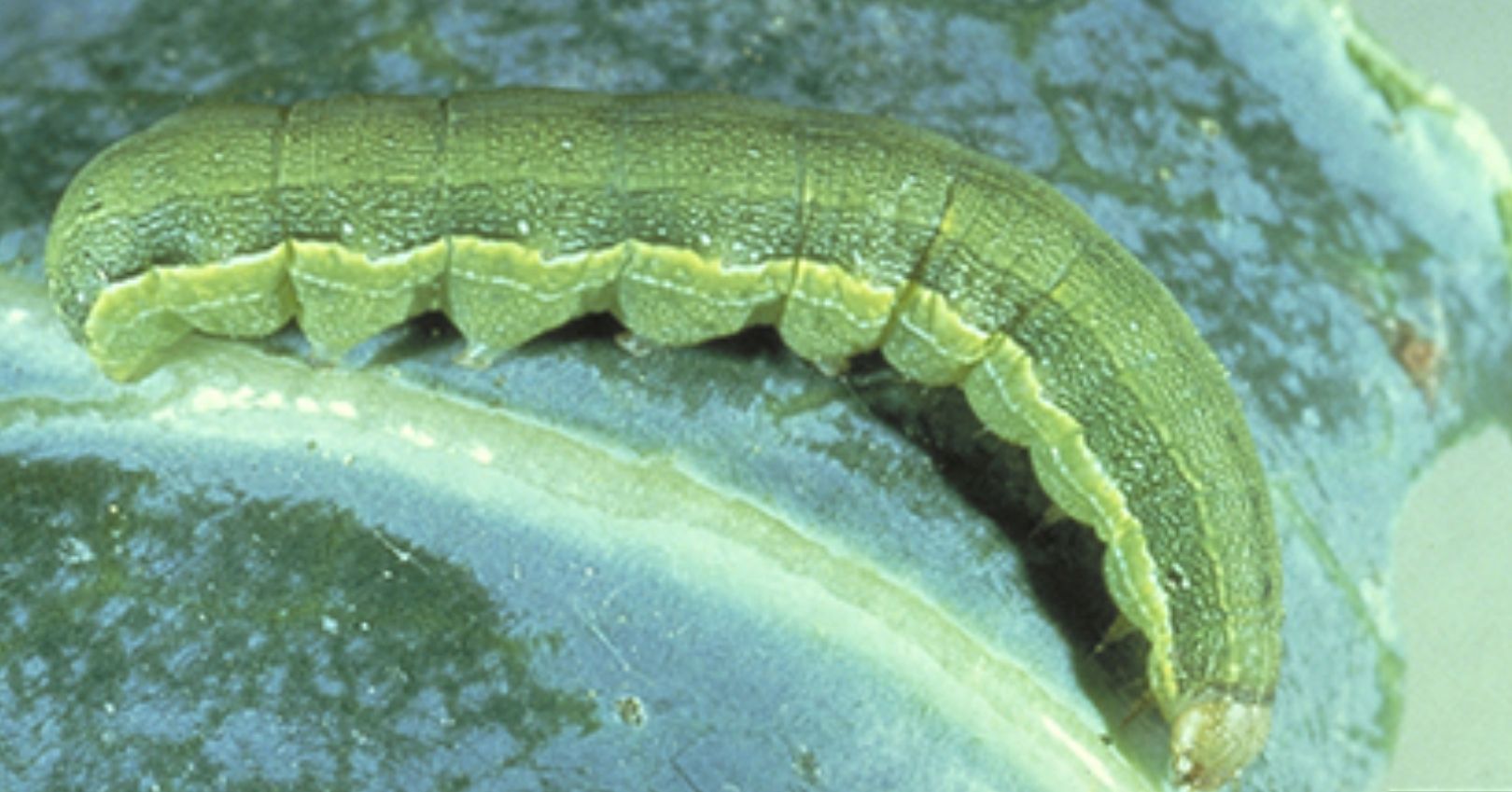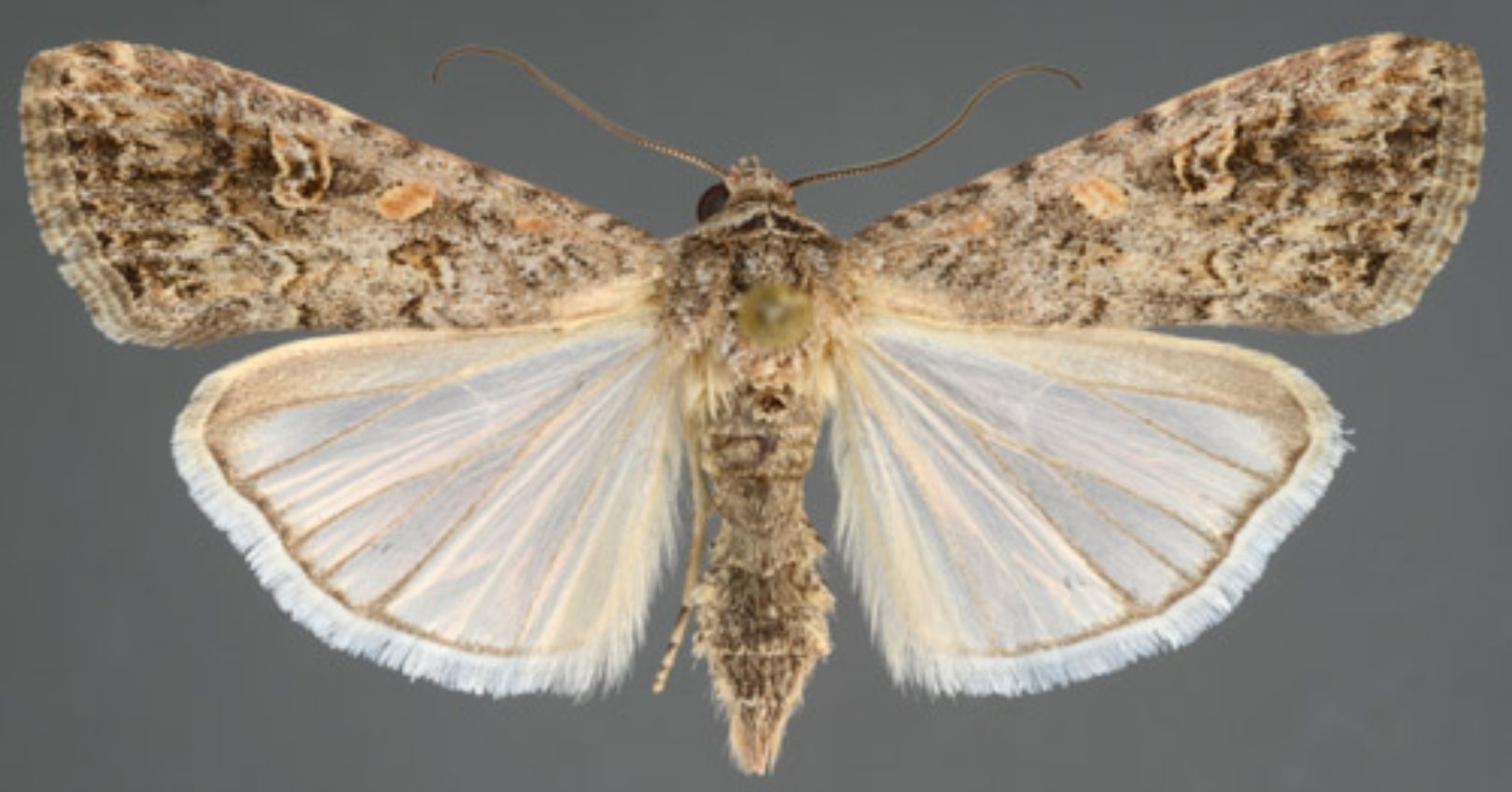Beet Armyworm


Description
Adult: Moths are gray-brown, with a 1 inch wingspan.
Egg: Ribbed, circular-pointed, and covered by fluff pulled from adult wings.
Larva: 1.25 inches long with light stripes along their sides, and without hairs or spines.
Pupa: ½-inch long, light brown in color.
Life History
In southern Utah, beet armyworms overwinter as pupae, emerging in spring. Females lay several hundred eggs, placed singly on the underside of leaves near blossoms and branch tips of woody hosts. After 2-5 days, the caterpillars hatch and feed for three weeks. When mature, the caterpillar pupates near the soil surface. During summer, pupation takes 5-8 days until the adult emergence. Several generations can occur each season. In northern Utah, beet armyworm pupae do not survive the cold winters, so moths are reintroduced each summer from southern locations.
Damage
Feeding caused by beet armyworm is a concern for a variety of vegetable crops, notably beets. They feed on foliage, shred leaves, make irregular holes, and in extreme cases, defoliation. The time of greatest concern is from mid-July through harvest.
Management
Cultural
- Till soil. In southern Utah, tilling the soil at the end of the season will disrupt the beet armyworm’s overwintering pupation stage, which occurs only a few centimeters below the surface.
- Use floating row covers. Apply row covers on seedlings or transplants in spring for 5-8 weeks to exclude adults from laying eggs on the crop.
Biological
The ichneumonid wasp (Hyposoter exiguae) is a parasitoid that lays eggs inside young beet armyworm larvae.

